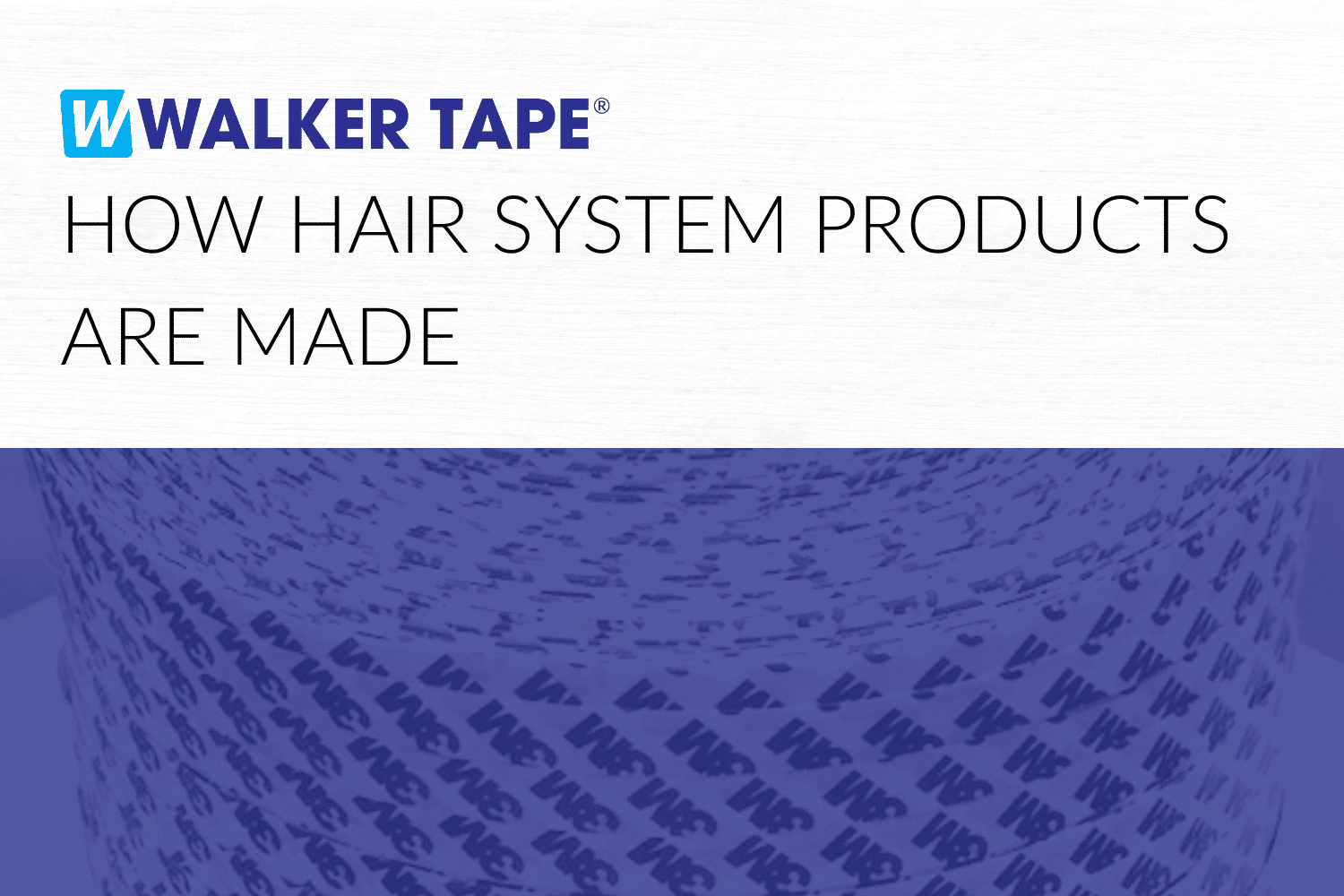
How are hair system products made?
What exactly makes the adhesives stick? Which ingredients help to remove the adhesive from the hair system? What does a silicone base mean for liquid adhesives like Mity-Tite? These different levels of sorcery can wield all sorts of questions amongst beauty businesses, stylists, and wearers.
That’s why in this blog, we will be going over the foundation of product creation for products such as tapes, liquid adhesives, and removers.
The “Flashing” Process for Tapes
In many tape information sheets across the hair adhesive industry, you’ll notice there’s a section explaining that since the ingredients used to make the adhesive are “flashed off” or “rendered inert” during manufacturing, there is no requirement for an SDS sheet. But what is “flashing off”?
“Flashing off” refers to the process of making the chemicals in adhesive ingredients inactive, or rendering them stable and free from the effects of the ingredients. There are a few ways that chemicals can be “flashed off” or “rendered inert”:
- Crosslinking: During the manufacturing of the adhesive, agents are added to the mix, chemically reacting with the ingredients, and turning them into a stable and inert property. This eliminates the possibility of chemical affects.
- Curing: Adhesives ingredients can be cured, or relieved, of their chemical effects through heating. Heating activates the curing agents involved, creating reactions that ensure that any remaining reactive chemicals are consumed, rendering the adhesive inert.
- Flashing: The overall flashing process consists of several steps: the adhesive is placed onto a backing material (such as liner) and then placed into an oven-like machine, where the chemicals are flashed off through a drying/heating process and ventilation carries the evaporation away. After, the now-dry adhesives can be cured for additional safety purposes.
Overall, the process of cross-linking, flashing, and curing renders the chemicals in the adhesive inactive or inert. This helps to ensure that the tape is ready for use without releasing harmful chemicals.
The Foundation of Liquid Adhesives
There are three primary bases that are chosen for the creation and manufacturing of hair system liquid adhesives. Each base type offers its own unique benefits to both the hair system, the scalp, and the overall hold/bond. Starting with:
Acrylic
The majority of our adhesives contain acrylic. This is for one very amazing benefit that the ingredient offers: customization.
Acrylic allows for a wide variety of customizations to be made to its core to help best fit whatever hair system scenario that we can think of – such as bonding in cold times, holding to sweatier and oilier skin, allowing for daily wear strength, and so much more. Acrylic bases can also:
- Handle even the hardest-to-stick-to surfaces, which includes the scalp.
- Offer fast curing times – which means that their hold takes effect almost immediately.
Water
Water bases offer the safest adhesives available for salons and clients. On average, water bases contain less of the chemicals in other adhesives bases, along with being:
- Gentle on skin, especially sensitive skin.
- Low odor.
- Non-stringy, allowing for a more even flow of adhesive.
Water bases are also a great base for glues, helping to give adhesives a stronger stick.
Silicone
Silicone-bases offer a variety of benefits for hair system adhesives. They have a high resistant to heat, humidity, and moisture, which makes them great for wearers who live in hot and humid climates. Silicone can bond to a wide variety of surfaces. Silicone bases also:
- Help create stronger adhesive bonds.
- Are more resistant to chemicals, moisture, and weathering that can affect the shelf life of the liquid adhesive.
Building Removers
Solvent removers must serve two purposes: completely removing the adhesive from the scalp and system, while also preventing any sort of issues from happening to the client and skin. With those goals in mind, Walker Tape® crafted our removers with a crucial ingredient.
Citrus Oils
Walker Tape® uses a blend of citrus oils in our removers that:
- Have moisturizing properties that make them ideal for hair care.
- It protects the hair system from damage.
- Have cleaning and degreasing properties.
- Much more pleasant on the hair than other harsher removers.
- Prevents inflammation on the scalp, making the removal process as gentle as possible.
All helping to make effective adhesive removers that are safe and gentle on your clients.
We’ve hope you learned a lot about how hair system products are made! If you have any additional questions or comments, feel free to leave them below. Or, you can contact our wonderful Customer Service team by phone at 1.800.759.5150, or by email at [email protected].




